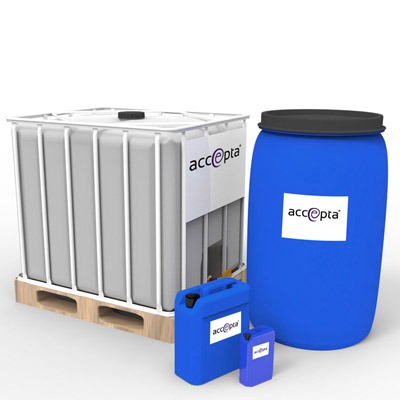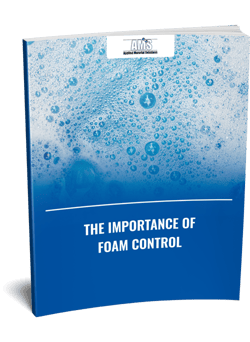Professional Tips on Implementing Foam Control in Chemical Handling Environments
Professional Tips on Implementing Foam Control in Chemical Handling Environments
Blog Article
Efficient Approaches for Accomplishing Optimum Foam Control in Chemical Manufacturing
Reliable foam control is a vital facet of chemical manufacturing that can considerably impact production efficiency and item quality. By recognizing the devices of foam development and selecting ideal anti-foaming representatives, makers can take proactive actions to mitigate too much foam. In addition, the implementation of procedure optimization techniques and advanced monitoring systems plays an important function in maintaining ideal operating conditions. However, the subtleties of these strategies can differ widely across various applications, raising vital questions about ideal methods and real-world executions that warrant more expedition.
Understanding Foam Development

Surfactants, or surface-active representatives, minimize the surface stress of the fluid, promoting bubble stability and advertising foam generation. Furthermore, anxiety or mixing processes can improve bubble formation, frequently intensifying foam concerns. The attributes of the fluid medium, consisting of viscosity and thickness, additional influence foam habits; for instance, even more viscous fluids have a tendency to catch air better, bring about boosted foam security.
Recognizing these basic elements of foam development is crucial for effective foam control in chemical production. By acknowledging the problems that advertise foam advancement, suppliers can carry out targeted methods to reduce its damaging results, thus optimizing manufacturing processes and making certain constant product top quality. This foundational knowledge is necessary before discovering certain techniques for regulating foam in commercial setups.
Option of Anti-Foaming Agents
When choosing anti-foaming representatives, it is necessary to consider the particular qualities of the chemical procedure and the sort of foam being created (Foam Control). Different aspects influence the efficiency of an anti-foaming representative, including its chemical structure, temperature level security, and compatibility with various other process products
Silicone-based anti-foams are commonly made use of because of their high effectiveness and broad temperature level range. They function by reducing surface area tension, permitting the foam bubbles to integrate and break more easily. However, they may not appropriate for all applications, specifically those involving delicate formulas where silicone contamination is an issue.
On the various other hand, non-silicone representatives, such as mineral oils or organic compounds, can be helpful in specific situations, specifically when silicone deposits are unfavorable. These representatives have a tendency to be less efficient at greater temperatures but can supply reliable foam control in various other problems.
In addition, recognizing the foam's origin-- whether it occurs from oygenation, agitation, or chemical reactions-- guides the option procedure. Testing under actual operating conditions is crucial to make certain that the selected anti-foaming representative satisfies the distinct needs of the chemical manufacturing process efficiently.
Process Optimization Techniques
Reliable foam control is an important aspect of enhancing chemical production processes. By fine-tuning these specifications, drivers can minimize disturbance, thus lessening foam formation during mixing.
Additionally, managing temperature level and pressure within the system can considerably influence foam generation. Decreasing the temperature may reduce the volatility of specific parts, causing reduced foam. Likewise, preserving ideal pressure levels helps in reducing extreme gas release, which adds to foam security (Foam Control).
An additional efficient technique is the strategic enhancement of anti-foaming representatives at vital stages of the procedure. Mindful timing and dosage can ensure that these representatives effectively suppress foam without disrupting other process parameters.
In addition, integrating a systematic examination of basic material buildings can aid recognize inherently lathering substances, permitting preemptive measures. Lastly, performing normal audits and procedure testimonials can disclose inadequacies and locations for improvement, allowing continuous optimization of foam control techniques.
Monitoring and Control Equipment
Monitoring and control systems play an important function in keeping optimal foam management throughout the chemical production process. These systems are vital for real-time monitoring and modification of foam levels, ensuring that manufacturing effectiveness is made the most of while lessening interruptions brought on by extreme foam development.
Advanced sensors and instrumentation are used to detect foam density and elevation, giving essential data that informs control formulas. This data-driven method permits for the timely application of antifoaming agents, making sure that foam levels stay within acceptable restrictions. By integrating surveillance systems with process control software application, producers can go to this website apply automated helpful resources actions to foam variations, decreasing the demand for hand-operated intervention and improving functional uniformity.
In addition, the combination of device discovering and anticipating analytics into keeping track of systems can promote positive foam management. By analyzing historic foam data and operational parameters, these systems can forecast foam generation patterns and suggest preemptive steps. Normal calibration and upkeep of monitoring equipment are important to make sure accuracy and integrity in foam discovery.
Inevitably, efficient tracking and control systems are essential for enhancing foam control, advertising security, and enhancing overall efficiency in chemical production atmospheres.

Study and Ideal Practices
Real-world applications of surveillance and control systems highlight the significance of foam management in chemical manufacturing. A noteworthy study includes a massive pharmaceutical manufacturer that executed an automated foam detection system. By integrating real-time monitoring with anticipating analytics, the center lowered foam-related production i thought about this downtime by 30%. The data-driven strategy enabled prompt treatments, guaranteeing regular product high quality and functional efficiency.
Another excellent instance originates from a petrochemical firm that adopted a combination of antifoam agents and process optimization methods. By examining foam generation patterns, the organization tailored its antifoam dosage, resulting in a 25% reduction in chemical use and significant expense savings. This targeted technique not just minimized foam disturbance but likewise improved the general security of the production procedure.

Final Thought
Finally, achieving optimum foam control in chemical production demands a comprehensive approach incorporating the option of appropriate anti-foaming representatives, application of procedure optimization techniques, and the combination of innovative monitoring systems. Routine audits and training further improve the performance of these strategies, promoting a society of continual improvement. By attending to foam development proactively, manufacturers can substantially boost production efficiency and product top quality, inevitably adding to more cost-efficient and sustainable operations.
By comprehending the systems of foam development and picking ideal anti-foaming representatives, manufacturers can take proactive steps to alleviate extreme foam. The features of the fluid tool, consisting of thickness and thickness, more impact foam actions; for instance, even more thick liquids often tend to catch air a lot more properly, leading to raised foam security.
Recognizing these fundamental aspects of foam formation is vital for effective foam control in chemical manufacturing. By analyzing historic foam data and operational parameters, these systems can anticipate foam generation patterns and advise preemptive procedures. Foam Control. Routine audits of foam control determines guarantee that processes remain optimized, while fostering a society of aggressive foam administration can lead to sustainable improvements throughout the production spectrum
Report this page